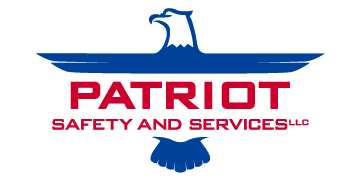Ensuring a safe and productive work environment
Ensuring a safe and productive work environment in transportation industries begins with proactive health and safety strategies, and one of the most critical tools in that process is DOT drug testing. Employers regulated by the Department of Transportation (DOT) are required to follow strict testing protocols, but the long-term value of DOT drug testing extends beyond compliance. It forms the foundation for risk prevention, brand protection, and operational continuity in safety-sensitive industries.
Understanding the Scope of DOT Drug Testing
DOT drug testing is federally mandated for safety-sensitive positions in industries regulated by the Department of Transportation, such as aviation, trucking, rail, transit, pipeline, and maritime operations. The scope of DOT drug testing includes pre-employment testing, post-accident testing, random testing, return-to-duty testing, and follow-up testing. Each of these categories serves a distinct purpose in monitoring employee fitness and deterring drug use.
DOT drug testing is standardized under 49 CFR Part 40, which ensures consistency and fairness in how tests are administered and reported. The regulated testing panel screens for specific substances, including marijuana, cocaine, amphetamines, opioids, and PCP. Since DOT drug testing uses laboratory-based testing and Medical Review Officer (MRO) evaluation, the accuracy and legal defensibility of results are critical for maintaining compliance and safety standards.
DOT Drug Testing as a Safety Culture Pillar
For businesses subject to DOT regulations, DOT drug testing is not just a box to check—it’s part of the larger framework of building a safety culture. Conducting DOT compliance drug testing sends a clear message to employees, contractors, and stakeholders that the organization values safety and accountability. By implementing DOT drug testing as part of a broader risk prevention program, companies can reduce the likelihood of workplace incidents and foster a culture of trust and responsibility.
DOT drug testing plays a critical role in mitigating risk for transportation-related employers. In high-risk environments, even one impaired individual can cause significant harm. DOT drug testing helps organizations prevent such incidents by identifying and removing individuals who are not fit for duty. This testing process also acts as a deterrent, encouraging employees to remain drug-free.
Legal Compliance and Regulatory Stability
DOT drug testing is essential for maintaining compliance with federal regulations. Non-compliance can lead to significant consequences, including fines, loss of operating authority, and damage to company reputation. By instituting a reliable DOT drug testing program, businesses protect themselves from legal exposure and demonstrate a commitment to regulatory stability.
Because DOT drug testing is required across multiple DOT agencies—including the FMCSA, FAA, FRA, and others—it forms a core part of compliance strategies for multi-modal transportation companies. Adhering to DOT drug testing requirements helps companies ensure smooth audits and avoid costly enforcement actions.
DOT Drug Testing for Operational Continuity
Unscheduled outages, staffing disruptions, or insurance claims related to drug-related incidents can disrupt business operations. DOT drug testing supports business continuity by maintaining a clean and safe workforce. When companies conduct DOT drug testing proactively and consistently, they reduce the chances of workforce interruptions due to substance use violations.
DOT drug testing can also help companies streamline hiring and onboarding. Pre-employment testing ensures that new hires entering safety-sensitive roles are free from substance use. Ongoing random and follow-up testing further reinforces this standard throughout the employment lifecycle, helping companies maintain a consistent and reliable workforce.
DOT Drug Testing in High-Risk Scenarios
Certain job roles and industry segments face higher levels of risk due to the nature of the work involved. In these environments, DOT drug testing becomes especially vital. For example, drivers who transport hazardous materials or operate long-haul routes are at increased risk of fatigue and environmental stress, both of which can increase the temptation to use controlled substances. DOT drug testing helps detect and deter this behavior before it leads to accidents or safety violations.
Post-accident DOT drug testing is another critical component. When a qualifying accident occurs, immediate DOT drug testing must be performed according to strict timelines and documentation procedures. This testing provides essential data for insurance claims, accident investigations, and legal inquiries.
Technology and Program Management in DOT Drug Testing
Managing a DOT drug testing program requires more than simply scheduling tests. Companies must document every test, track compliance deadlines, manage random selection pools, and maintain secure records. Leveraging technology such as TPA consortium services and compliance management software helps companies streamline DOT drug testing workflows and reduce administrative overhead.
Partnering with experienced providers like Patriot Safety and Services ensures that DOT drug testing is carried out with precision, professionalism, and full regulatory alignment. These providers offer national collection site networks, mobile testing units, and advanced reporting tools to help clients meet their DOT drug testing obligations efficiently and effectively.
DOT Drug Testing and Workforce Trust
One often overlooked benefit of DOT drug testing is the way it strengthens internal morale and workforce trust. Employees who know their coworkers are being held to consistent safety standards—including DOT drug testing—are more likely to feel secure and supported in their roles. It also signals that the employer is serious about maintaining a fair and accountable work environment.
By prioritizing DOT drug testing, companies create a safer environment not just for employees, but also for the public and the communities they serve. This commitment reflects positively on the company’s brand, positioning it as a responsible and trustworthy organization within the transportation sector.
Evolving Trends in DOT Drug Testing
As federal guidelines evolve, DOT drug testing is adapting to include new testing methods and expanded detection capabilities. For example, oral fluid testing has gained regulatory traction as an alternative to urine testing, providing greater flexibility and faster turnaround times while maintaining accuracy and compliance.
In addition, increasing attention is being paid to the intersection of legal marijuana use and DOT drug testing. Although marijuana may be legal in some states, it remains a prohibited substance under federal DOT drug testing regulations. Employers must continue to educate their workforce on the federal requirements and enforce DOT drug testing standards consistently.
Strategic Integration of DOT Drug Testing into HR and Safety Programs
DOT drug testing should not be isolated from other HR or safety initiatives. When integrated into a larger compliance and wellness framework, DOT drug testing enhances broader workforce safety goals. Employers should consider combining DOT drug testing with background checks, physicals, safety training, and employee assistance programs to promote overall well-being.
DOT drug testing policies should also be clearly communicated in employee handbooks and onboarding materials. Ensuring that supervisors are trained on reasonable suspicion protocols and that testing logistics are well-coordinated contributes to a seamless and compliant implementation.
Conclusion
DOT drug testing is far more than a regulatory obligation—it is a critical component of long-term business success. From compliance to risk mitigation, from workforce integrity to operational continuity, DOT drug testing offers measurable advantages to companies operating in safety-sensitive industries.
Companies that prioritize DOT drug testing demonstrate leadership in safety and responsibility, and they position themselves for sustained success in a competitive marketplace. By choosing trusted partners like Patriot Safety and Services to manage and optimize DOT drug testing programs, employers can ensure every step of the process meets the highest standards of accuracy, efficiency, and legal compliance.

